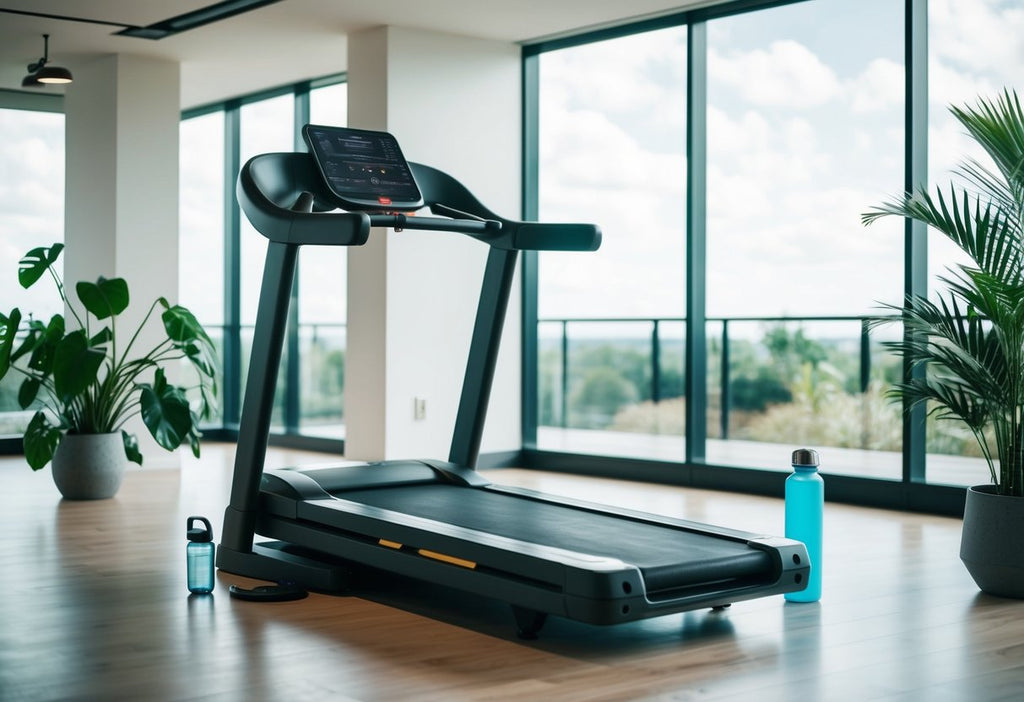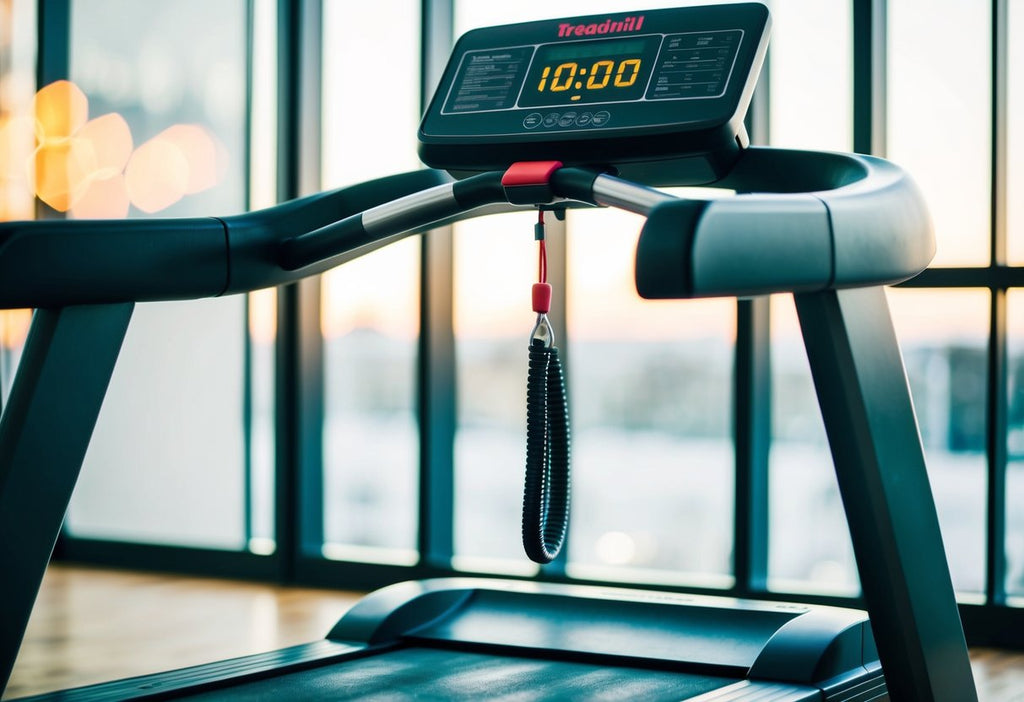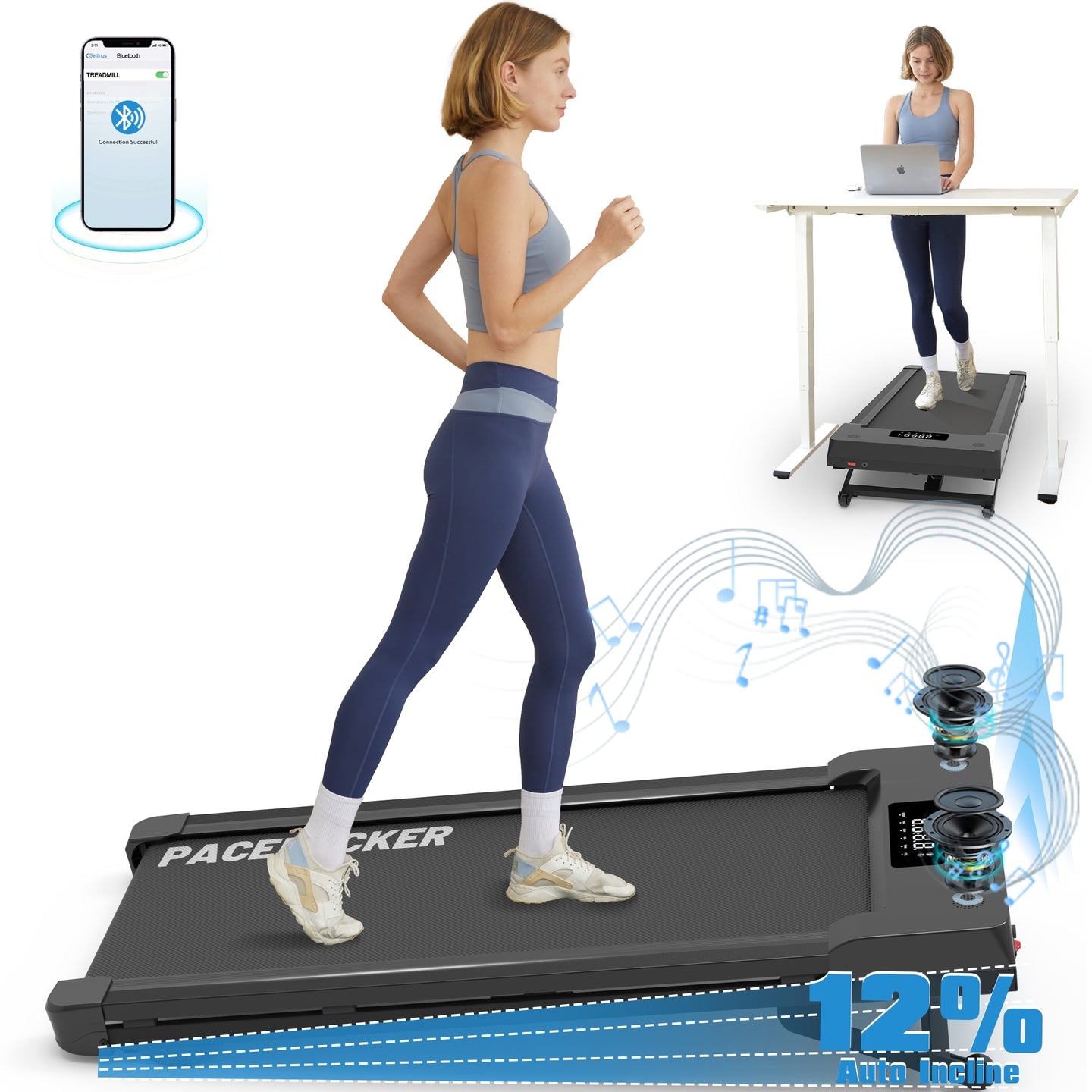Can You Train for a Marathon on a Treadmill

Don’t forget to check out our Pacerocker, Trailviber, and Trailviber Auto Incline walking pad treadmills.
Training for a marathon is a big challenge, and many of us wonder if it can be done on a treadmill. Yes, you can train for a marathon on a treadmill. This option provides convenience and control over your training environment, making it an attractive choice for many runners.
Using a treadmill offers benefits like controlling the pace and simulating different terrains without worrying about the weather. We don't have to deal with rain or extreme heat, and we can easily adjust the incline to mimic hills. This might make our marathon training more consistent and less interrupted.
We need a smart approach to effectively train on a treadmill. A well-structured plan is essential, including setting clear goals and monitoring our progress. By understanding how to optimize treadmill settings and focusing on nutrition and recovery, we can prepare ourselves mentally and physically for marathon day.
Key Takeaways
- Training on a treadmill for a marathon is possible.
- A structured plan helps maintain consistency.
- Control over environment and settings benefits marathon prep.
Understanding Marathon Training Basics
Training for a marathon requires a well-structured plan that covers essential components like long runs and a regular schedule. Setting clear goals can help us stay motivated and achieve our personal best.
Marathon Training Plan
Creating a detailed plan is crucial. We should start by setting realistic goals, such as finishing under a certain time or simply completing the race. This helps us tailor our training to meet these objectives. It's important that our plan spans several months, typically 16-20 weeks, allowing gradual increases in intensity and volume.
Each week, we need to include a mix of different runs. Key types include:
- Long runs to increase endurance
- Speed workouts for pace improvement
- Recovery runs for rest
We should aim for at least three to four runs per week. Tracking our progress and adjusting our plan as needed ensures we are staying on track.
Training Plan Components
A good plan balances various elements to enhance our performance and avoid injury. The central part of any marathon training plan is the long run. Long runs are usually done once a week and gradually increase in length, reaching around 18-20 miles by the peak training weeks.
Speed and tempo runs improve our pace. Speed workouts involve short bursts of running, while tempo runs are at a steady, challenging pace. Both are essential in making us faster.
Incorporating rest days and cross-training, like cycling or swimming, aids recovery and builds strength without overloading our muscles. Proper nutrition and hydration help fuel our runs and support recovery. Staying healthy and injury-free should always be a top priority.
Benefits of Treadmill Training
Treadmill training offers several advantages, from maintaining steady workouts year-round to replicating the experience of outdoor conditions. It allows us to fine-tune our practice comfortably.
Consistency and Convenience
One great thing about treadmill training is its consistency. We can run regardless of weather. Rain, snow, or heat waves won't stop us. This means fewer missed training days.
It's also convenient for busy schedules. We can squeeze in a run early in the morning or late at night. With no commute or route planning, we can focus entirely on our pace and distance.
Treadmill features:
- Adjustable speed
- Distance tracking
- Pre-set workouts
These help us reach specific fitness goals systematically.
Simulating Race Conditions
Another advantage is the ability to simulate race conditions. We can adjust the treadmill incline to mimic hills or a flat marathon course. This prepares us for a wide range of race scenarios.
Using treadmills, we can also practice pacing strategies. Setting and maintaining a consistent speed is simpler when running indoors, helping us stick to our planned race pace without distractions.
Simulating different terrains, like hills, not only boosts our endurance but also strengthens leg muscles. This way, we're more prepared for what lies ahead during actual races.
Controlled Environment
Training indoors gives us a controlled environment, which aids in monitoring and improving performance. Treadmills let us keep track of time, speed, and distance precisely.
This control helps us test different running techniques safely. If injury recovery is a concern, the cushioned surface of a treadmill reduces impact on joints compared to hard outdoor surfaces.
We can also control the temperature, avoiding extreme cold or heat, which sometimes hampers outdoor training. This ensures a productive training session every time we step on the treadmill.
Designing Your Treadmill Marathon Program
When training for a marathon on a treadmill, it’s important to include varied workouts. We must schedule long runs, pace ourselves properly, incorporate hill training, and make space for cross-training.
Incorporating Long Runs
Long runs are a key part of any Marathon Training Plan. Treadmill Workouts can help us gradually increase our distance. A good strategy is to build up our mileage by 1-2 miles weekly until reaching our desired distance.
Hydration and nutrition play important roles. We should simulate race conditions by practicing with our fuels and hydration methods on these longer runs. Using the treadmill's incline feature can mimic the terrain changes of outdoor courses.
Pacing and Speed Work
Pacing is crucial in marathon preparation. With a treadmill, we can manage our speed exactly and avoid going too fast at the start. We can set specific pace goals and use the treadmill's controls to stay consistent.
Speed Work, like interval training, is easier to regulate on a treadmill. We can incorporate intervals of faster paces followed by recovery periods. This type of workout improves cardiovascular fitness and helps us maintain a strong pace, crucial for race day.
Hill and Tempo Training
Hill Workouts add great value to our training. Most treadmills allow us to adjust the incline, which can simulate hills. Regular hill sessions build strength and improve endurance.
Tempo Runs, another vital component, focus on maintaining a steady, challenging pace. They improve our lactic threshold, allowing us to run faster over longer distances. We can set the treadmill to a specific speed and practice sustaining it, boosting our stamina for marathon running.
Cross-Training Integration
Cross-training helps us enhance overall fitness while reducing the risk of injury. Activities like cycling, swimming, or strength training complement our running routine. They work different muscle groups and provide a mental break from running while keeping us active.
Including 1-2 days of cross-training weekly balances our program. This variety strengthens muscles and improves flexibility, vital for preventing overuse injuries common in marathon runners. By diversifying our workouts, we create a comprehensive and effective treadmill marathon training plan.
Physical and Mental Preparation
Training for a marathon on a treadmill challenges both the body and mind. We must focus on mental strength, maintain proper running form, and engage in muscle activation for effective preparation.
Building Mental Toughness
Running on a treadmill can feel repetitive. To build mental toughness, we should set specific goals for each session. Tracking our progress helps us stay motivated.
Changing the treadmill's incline and speed also adds variety. Listening to music or podcasts keeps our minds engaged. Mental exercises, like visualization techniques, prepare us for the race day, boosting our confidence and focus. It's about staying consistent and pushing through challenges.
Running Form and Technique
Maintaining proper form on a treadmill is crucial. Our posture should be upright with relaxed shoulders and slight forward lean. We keep our gaze forward, not down. Arm movement should be steady, swinging at our sides.
Attention to foot strike helps avoid injury. Landing softly on the midfoot rather than the heels is ideal. Short, quick steps prevent overstriding. Regular checks in a mirror or recording ourselves can guide improvement. Proper form enhances efficiency and energy use.
Muscle Activation and Strength
Engaging the right muscles is essential during treadmill training. Calves, quads, and hamstrings should all be active in each step. Core strength stabilizes our body. Simple exercises like planks and lunges build these muscles.
Incorporating light strength training off the treadmill boosts overall efficiency. Exercises like squats and calf raises strengthen legs, preventing fatigue during long runs. Alternating intensity and incorporating rest ensures balanced development and injury prevention.
Tackling Common Treadmill Challenges
Training on a treadmill can be tricky. We face issues like staying motivated, reducing joint pain, and keeping boredom at bay. Let's explore how to handle these challenges effectively.
Maintaining Motivation
Staying motivated on a treadmill requires setting clear goals. We should break our long-term goal into small, achievable milestones. This not only gives us a sense of achievement but also keeps us on track.
Tracking progress is essential. Using apps or a journal, we can record our workouts and improvements. Seeing our accomplishments can boost motivation and keep us moving forward.
Let’s not forget to incorporate variety. Mixing up speed and incline or trying new workout routines can make treadmill sessions more engaging and less monotonous.
Avoiding Joint Impact
Joint health is crucial when running on a treadmill. We should ensure proper footwear. Wearing well-cushioned, supportive shoes can reduce the impact on our joints and prevent injuries.
Adjusting the treadmill settings is also important. Using a slight incline simulates outdoor running and lessens the risk of joint problems. This helps distribute impact more evenly across our body.
Moreover, maintaining good form is key. We should keep our posture upright and stride naturally. This reduces unnecessary stress on our joints and enhances our overall running efficiency.
Managing Boredom
To fight boredom, we can use entertainment options. Listening to music or podcasts can make time fly by. We should choose upbeat tracks that match our running pace to keep energy levels high.
Watching TV shows or movies is another option. Streaming services and treadmill setups with screens allow us to indulge in visual entertainment while working out.
Building mental toughness is vital as well. We can set mental challenges or play mind games with ourselves. This not only distracts us from the monotony but also strengthens our mental resilience over time.
Optimizing Treadmill Settings for Marathon Training
When training for a marathon using a treadmill, key settings like incline, speed, and surface play a crucial role. By adjusting these features, we can create conditions that mimic outdoor running effectively.
Incline and Decline Settings
Using incline settings on a treadmill helps us simulate varying terrains. For a marathon, setting an incline between 1-2% is usually beneficial. This range helps mimic outdoor wind resistance and slight hills. Running at this incline can improve our endurance and leg strength over time.
On some treadmills, decline settings are also available. Training with a slight decline can help prepare us for downhill segments. However, we should use this carefully to prevent overstraining muscles, especially if our legs are not used to downhill running.
Speed and Interval Settings
Adjusting speed and creating intervals on the treadmill can greatly enhance cardio endurance. Regularly varying our speed can mirror outdoor conditions better. We might start with brisk walking or jogging, then increase the speed every few minutes to prepare for different race paces.
For interval training, alternating between fast running and slower recovery periods is key. This type of session helps in building stamina and speed. Pace variety trains our bodies to handle different intensities, useful in adapting to race day challenges.
Surface and Stability
The treadmill’s running surface should feel stable and slightly cushioned. A solid yet flexible surface helps absorb impact, protecting our joints as we run. It's important to check that the treadmill belt does not slip and provides enough traction to match outdoor conditions.
Some treadmills offer features like extra cushioning or firmness adjustments. We can modify these settings to find what best mimics outdoor surfaces. While softer surfaces may reduce impact injuries, firmer settings can better replicate road running. Selecting the right balance helps make our treadmill marathon training more effective.
Nutrition and Recovery Strategies
When training for a marathon, our nutrition and recovery strategies are crucial. We need energy for long treadmill runs, hydration to maintain performance, and effective recovery plans to minimize injuries and boost progress.
Fueling for Long Treadmill Runs
During marathon training, our energy needs rise. For treadmill runs, fueling strategies are essential. Carbohydrates are our primary energy source. It’s best to eat a balanced meal rich in carbs a few hours before running. Options like oatmeal or a banana with peanut butter work great.
During long runs, quick-digesting carbs help maintain energy. Consider gels or sports drinks. Experiment during training to find what suits our stomachs best. After running, a mix of protein and carbohydrates replenishes energy and aids muscle recovery. Chocolate milk or a smoothie can be effective recovery snacks.
Hydration Techniques
Staying hydrated is vital for peak performance. Water is essential, but during long, sweaty treadmill sessions, we might need more. Adding electrolyte solutions helps replenish sodium and potassium lost through sweat.
We should drink regularly rather than waiting until we're thirsty. For runs over an hour, planning water breaks or using a hydration pack is wise. Monitoring the color of our urine is a simple way to check hydration levels. A pale yellow color suggests proper hydration.
Recovery Protocols
Effective recovery allows us to train consistently. After a long or intense run, it’s important to start with cooldown exercises. Gentle stretches or yoga can help reduce soreness. On rest days, engaging in light activities like walking or cycling keeps us active without overexertion.
Getting enough sleep is one of the critical components for allowing our muscles to recover and grow stronger. Regular foam rolling can aid in muscle recovery by improving blood flow. Having rest days built into our training keeps our schedule sustainable and promotes long-term progress.
Frequently Asked Questions
Training for a marathon on a treadmill can be effective if approached with the right methods and tools. Our focus is on the best practices, suitable equipment, and comparisons with outdoor training, aimed at helping you prepare effectively.
What are the best practices for treadmill marathon training for beginners?
To start marathon training on a treadmill, beginners should gradually increase their running distance and duration. It's helpful to include a warm-up and cool-down in each session. Incorporating intervals and varying incline can mimic outdoor terrain and prevent boredom.
What type of treadmill is most suitable for rigorous marathon training?
A treadmill with a strong motor, wide belt, and adjustable incline is best for marathon training. These features ensure smooth operation during long runs. Stability and cushioning also play a crucial role in reducing joint stress over extended periods of running.
How does treadmill running compare to outdoor running in terms of marathon preparation?
Treadmill running offers consistent pacing and a controlled environment, which can be beneficial for tracking progress. However, outdoor running presents variability in terrain and weather conditions, which can be essential for building stamina and adapting to race day situations.
Can long-distance treadmill running effectively prepare you for a marathon?
It is possible to prepare for a marathon with long runs on a treadmill if you maintain consistency. The key is to mimic outdoor running challenges, like varying speeds and inclines. Remember, adapting to mental and physical demands is essential, whether indoors or outdoors.
Is it possible to solely use a treadmill for a comprehensive three-month marathon training program?
Yes, a treadmill can be used exclusively for a three-month marathon program. It's vital to incorporate different running styles such as sprints and long-distance runs. Adding cross-training can help balance your routine and improve overall endurance.
What should a beginner's treadmill training plan include to ensure marathon readiness?
A beginner's plan should have a mix of long runs, speed workouts, and rest days. Cross-training, like cycling or strength exercises, can enhance performance. Regularly increasing mileage and intensity, while listening to our body's signals, helps prepare for marathon challenges.
Train effectively for a marathon on a treadmill with controlled settings, structured plans, and consistent progress monitoring. Perfect for all weather conditions.







